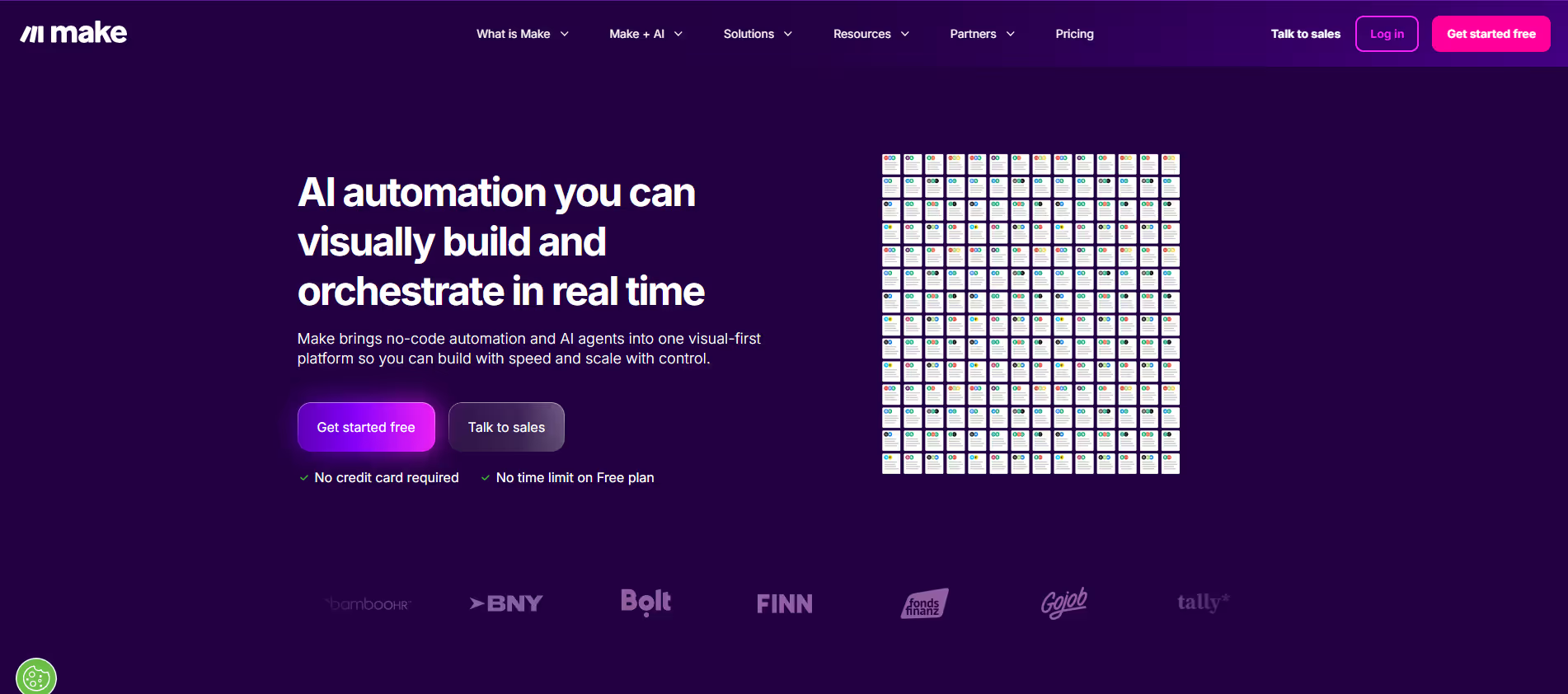Tool Insights
Home > Tools > Tool Details
Make (formerly Integromat)
Description
Make (formerly Integromat) is a powerful visual platform for designing, building, and automating workflows by connecting apps and services without writing any code.
Make offers a highly visual and flexible approach to workflow automation, enabling users to connect thousands of apps and services to automate tasks, transfer data, and build sophisticated systems. Its modular structure allows for precise control over data flow, complex logic, and error handling, making it suitable for both simple automations and intricate business processes across various departments, from marketing to IT.
Key Applications
- Marketing Automation: Automating lead nurturing, social media posting, and campaign management workflows.
- Data Synchronization: Keeping databases, CRMs, and project management tools in sync across multiple platforms.
- Operations Management: Streamlining repetitive administrative tasks, reporting, and data processing.
- IT & DevOps: Orchestrating system alerts, data backups, and managing cloud resource provisioning.
- E-commerce: Automating order processing, inventory updates, and customer communication.
Who It’s For
Business users, developers, marketers, sales teams, and operations professionals seeking to automate complex workflows and integrate disparate software systems without deep coding knowledge. It is particularly valuable for those who require fine-grained control over their automation logic.
Pros & Cons
How It Compares
- Versus Zapier: Make generally offers more advanced logic, deeper customization, and a more visual, granular control over data flow and multi-step scenarios, often at a more cost-effective price point for high-volume tasks. Zapier, while robust, prioritizes ease of use for simpler, quicker automations.
- Versus Workato: Make provides a more accessible entry point for complex automations compared to Workato, which is often geared towards larger enterprises with dedicated IT resources for extensive integration platform as a service (iPaaS) needs, offering a similar level of depth but often higher complexity and cost.
Bullet Point Features
- Visual Workflow Builder: Drag-and-drop interface for designing complex scenarios. Thousands of App Integrations: Connects with a vast library of popular business applications.
- Advanced Logic Tools: Conditional routing, iterators, aggregators, and error handlers. Data Transformation: Powerful tools for mapping, parsing, and formatting data between modules.
- Webhooks & API Connectivity: Custom integrations via webhooks and direct API calls. Real-time Processing: Executes scenarios instantly upon trigger events. Scenario Scheduling: Option to run scenarios at specific intervals. Version Control: Manage and revert to previous versions of scenarios.
Disclosure
All product names, logos and brands are property of their respective owners. Use is for educational and informational purposes only and does not imply endorsement. Links are to third-party sites not affiliated with Barndoor AI. Please see our Terms & Conditions for additional information.



.avif)




